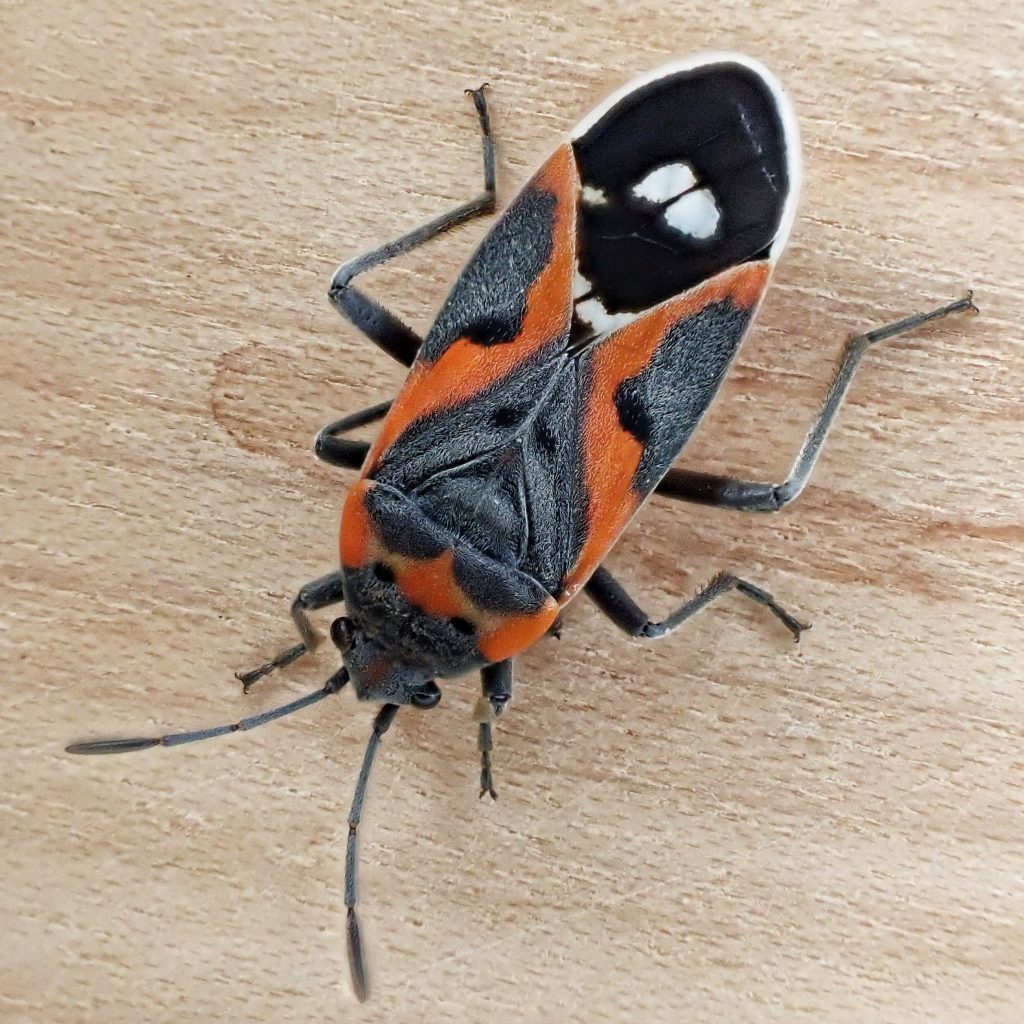
It was a very pleasant surprise when I peeled back a bit of exfoliating bark on a willow tree and found my first Lygaeus kalmii! I have been wanting to see one of these beautiful bugs ever since I saw a photo of one in ‘Pacific Northwest Insects’ (Peterson; 2018). I found this one along the Columbia River near Woodland, Washington. It is not a place I frequent very often, but I don’t remember ever seeing any milkweed (Asclepias) in that area, although the plant or the bug could have certainly been deposited by the river, and there may well be cultivated milkweed in a local resident’s garden.
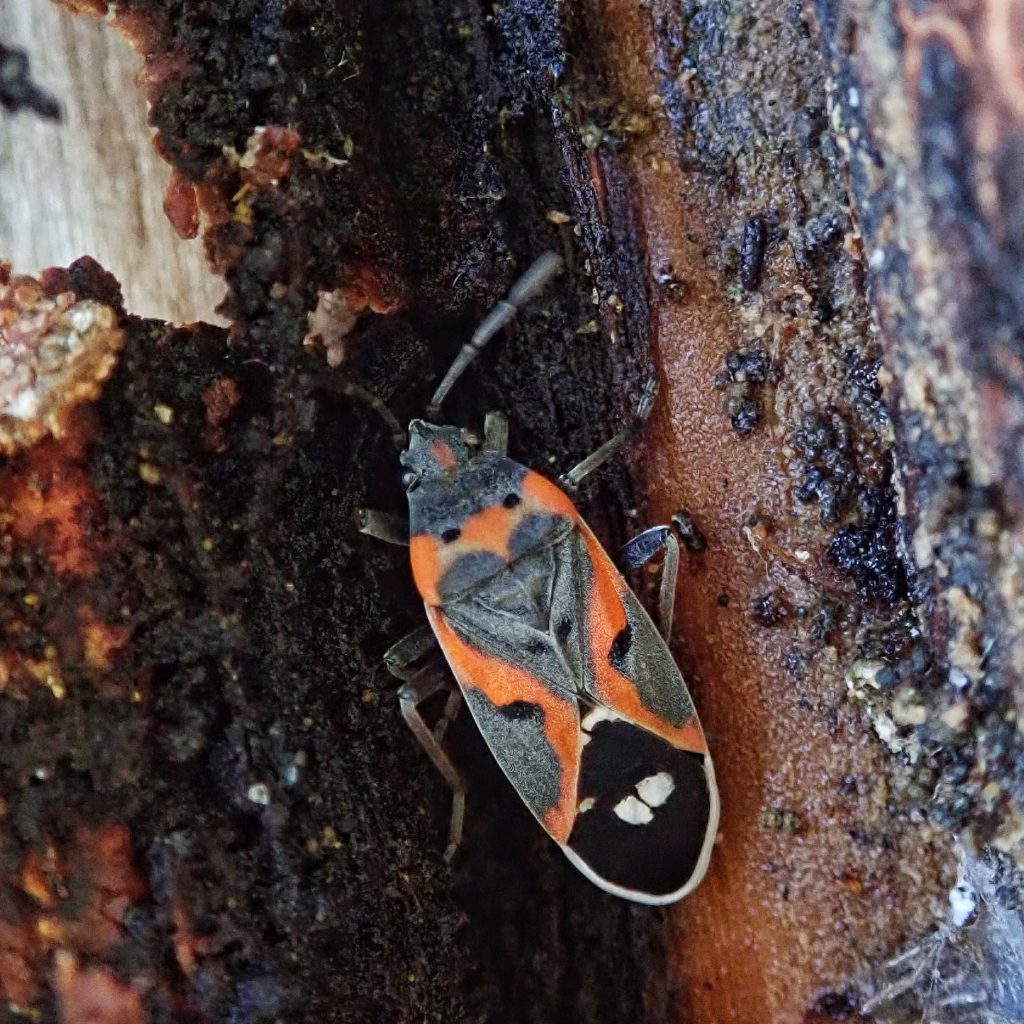
However, it turns out that these true bugs (Hemiptera) in the family Lygaeidae (seed bugs) are facultative, rather than obligate, on milkweed. This means that, while they have a clear preference for laying eggs on milkweed, the nymphs can utilize other hosts, including (but not limited to) Lepidium sp. (peppergrass) and Apocynum sp. (dogbane). Despite a preference for the seeds and nectar of Asclepias sp., adults and nymphs of this voracious species will also consume other plants, scavenge dead insects, eat carrion, and even eat arthropod eggs and larvae. This can be a real problem for true milkweed obligates such as Monarch butterflies (Danaus plexippus) and Chrysochus cobaltinus (Blue Milkweed Beetle), which don’t have the option of finding another species of plant on which to live.
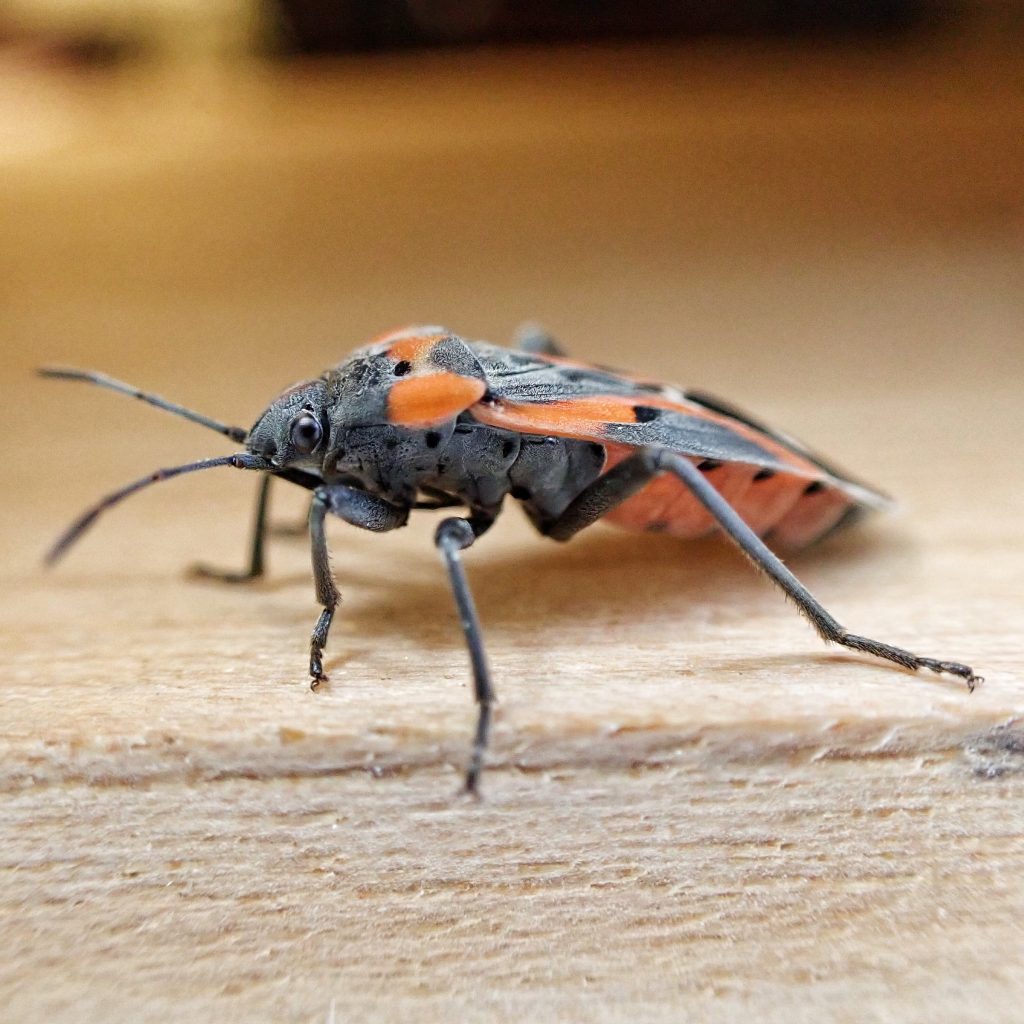
The bold and colorful patterning of the Small Milkweed Bug is aposematic, but it may not always be a valid warning, since nymphs and adults that don’t focus their consumption on milkweed undoubtedly have far fewer toxic cardenolides than those that do. And, like most Batesian mimicry, this can backfire on the models, because predators that are not repulsed by the taste may end up doing damage to the truly toxic members of the population, until they learn to be warned off by the coloration.
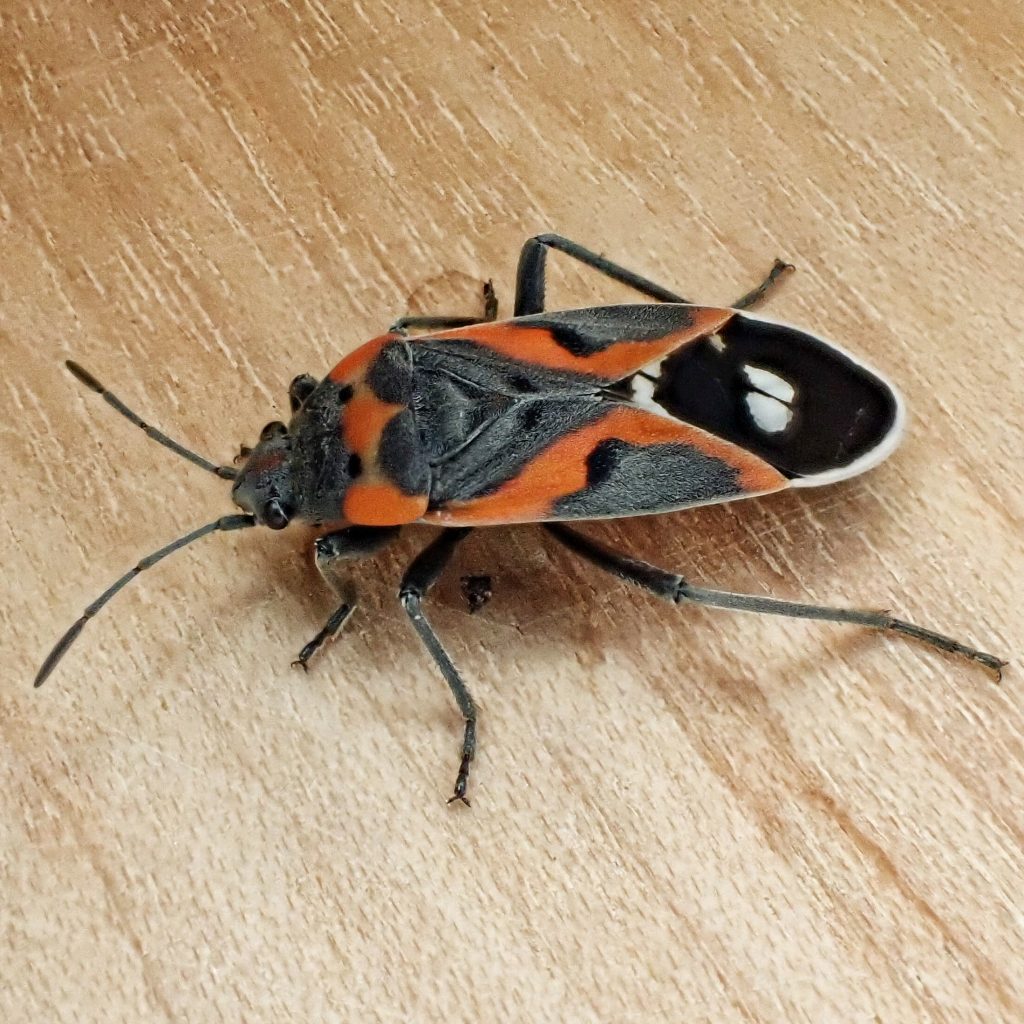
Description-Medium sized (10-12mm long) oval bugs with two grey half circles and two black dots on a red pronotum, grey hemelytra with a longitudinal red X that doesn’t meet in the middle, and dark to black membrane with 2 white dots and a white border.
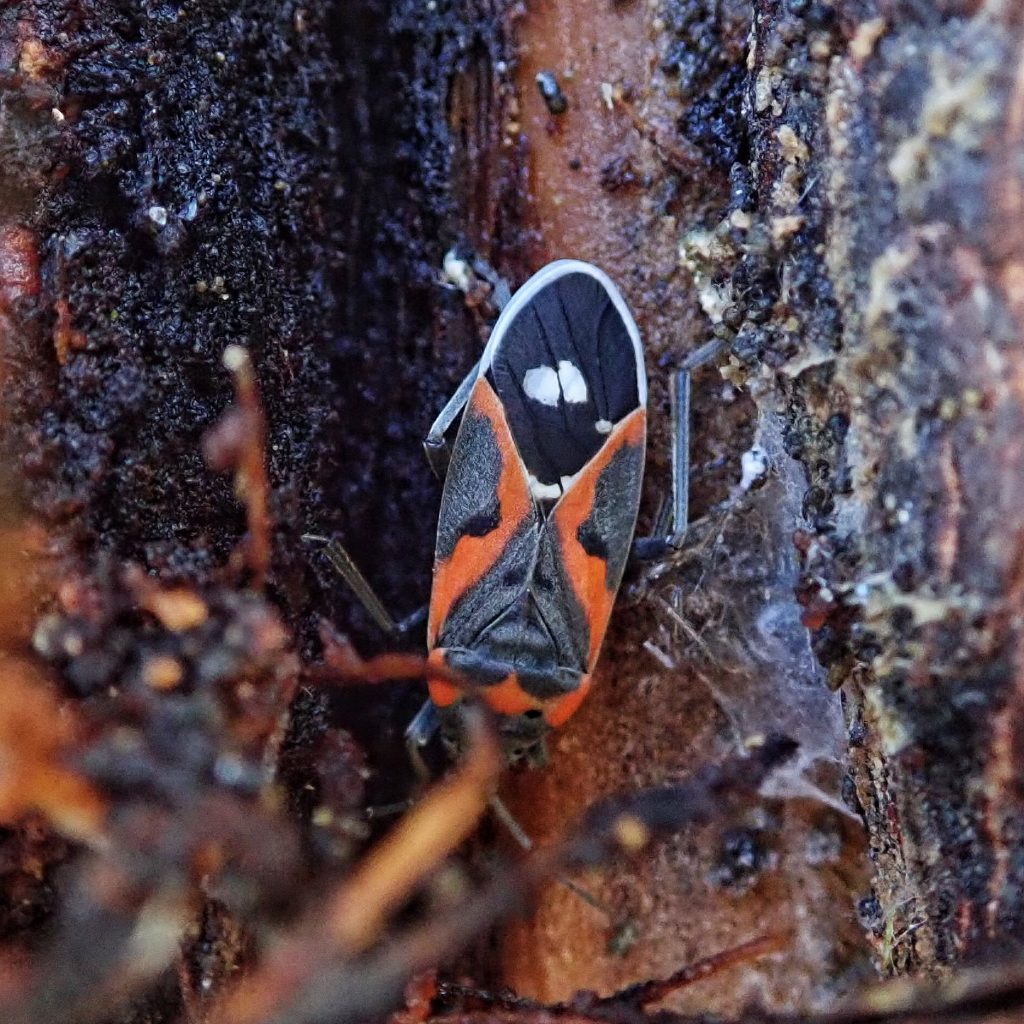
Similar species–L. reclivatus, which is probably a subspecies of L. kalmii, has more red; L. brevipilus has less red; L. truculentus has a grey membrane.
Habitat– Usually somewhere in the vicinity of milkweed or dogbane.
Range– North American native; eastern subspecies is L. k. angustomarginatus; region wide in appropriate habitat.
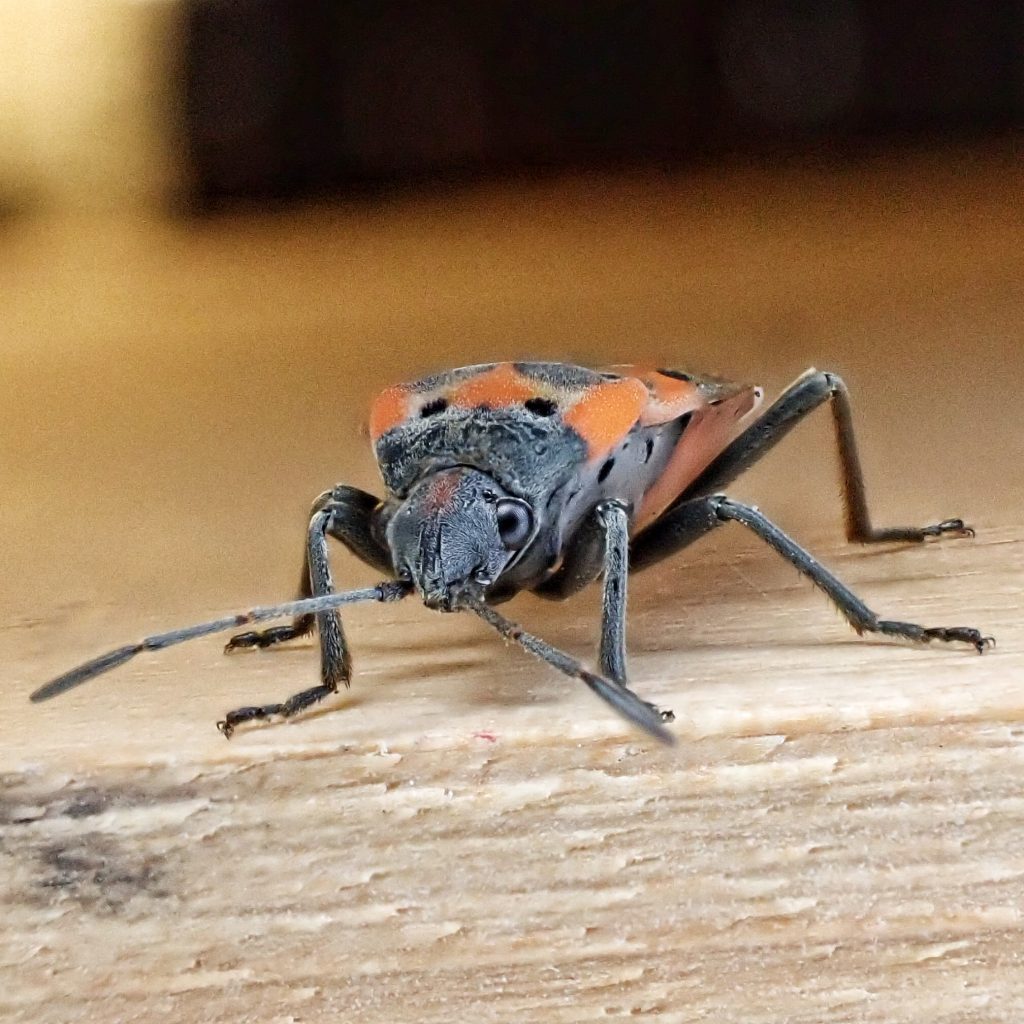
Eats-Prefers Asclepias seeds and nectar, but will feed on other plants, carrion, dead insects, and eggs and larvae of arthropods.
Eaten by-Because of the cardenolides from the milkweed, not many things twice.
Adults active-March to October, and occasionally on warm days in winter.
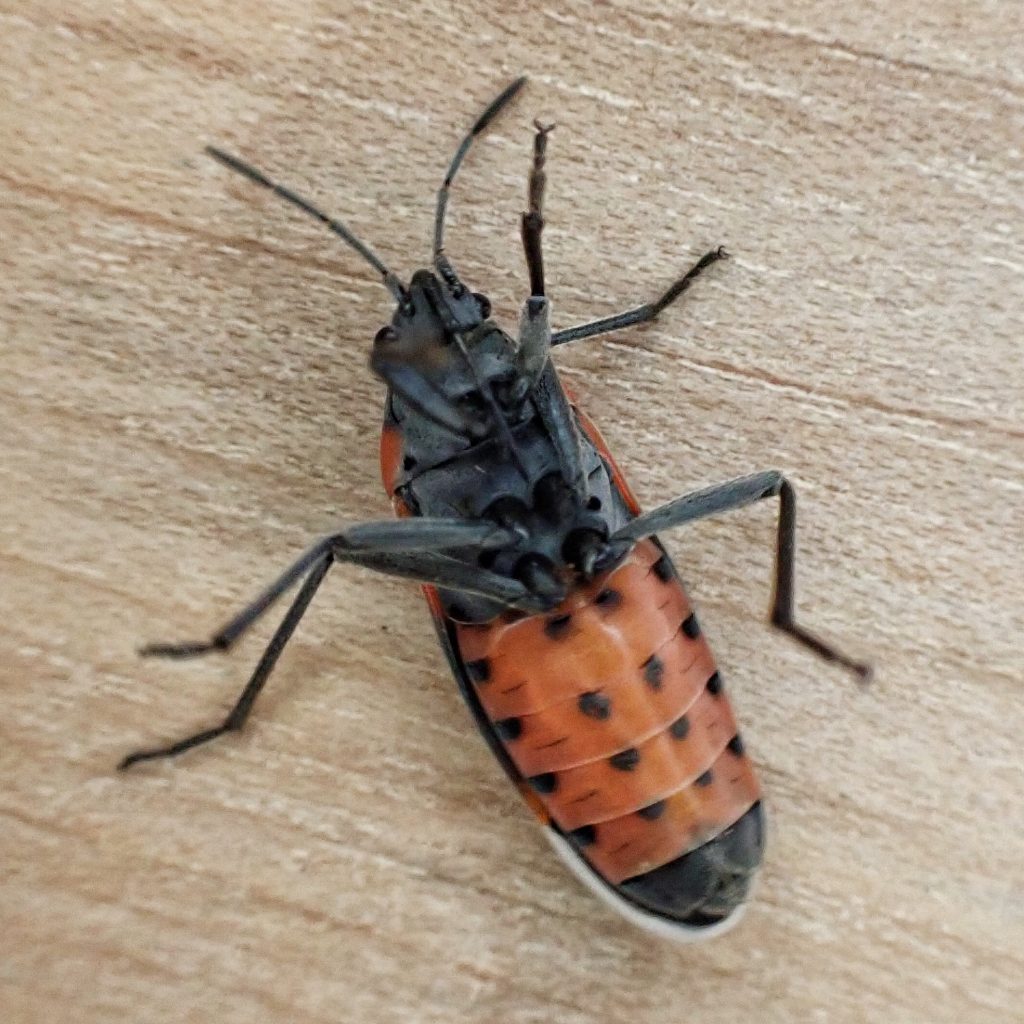
Life cycle-Multivoltine; eggs laid on milkweed, dogbane, or less satisfactory plants early in the year; definitely over winters as a quiescent, rather than diapaused, adult; may also overwinter as a late instar nymph in some situations; lifespan about a year.
Etymology of names–Lygaeus is from the Greek for ‘shadowy’, but I can’t ascertain what Fabricius was referencing. The specific epithet kalmii doesn’t seem to have a Greek or Latin equivalent, and I suspect Stål named it after a person, although I cannot find the original description.
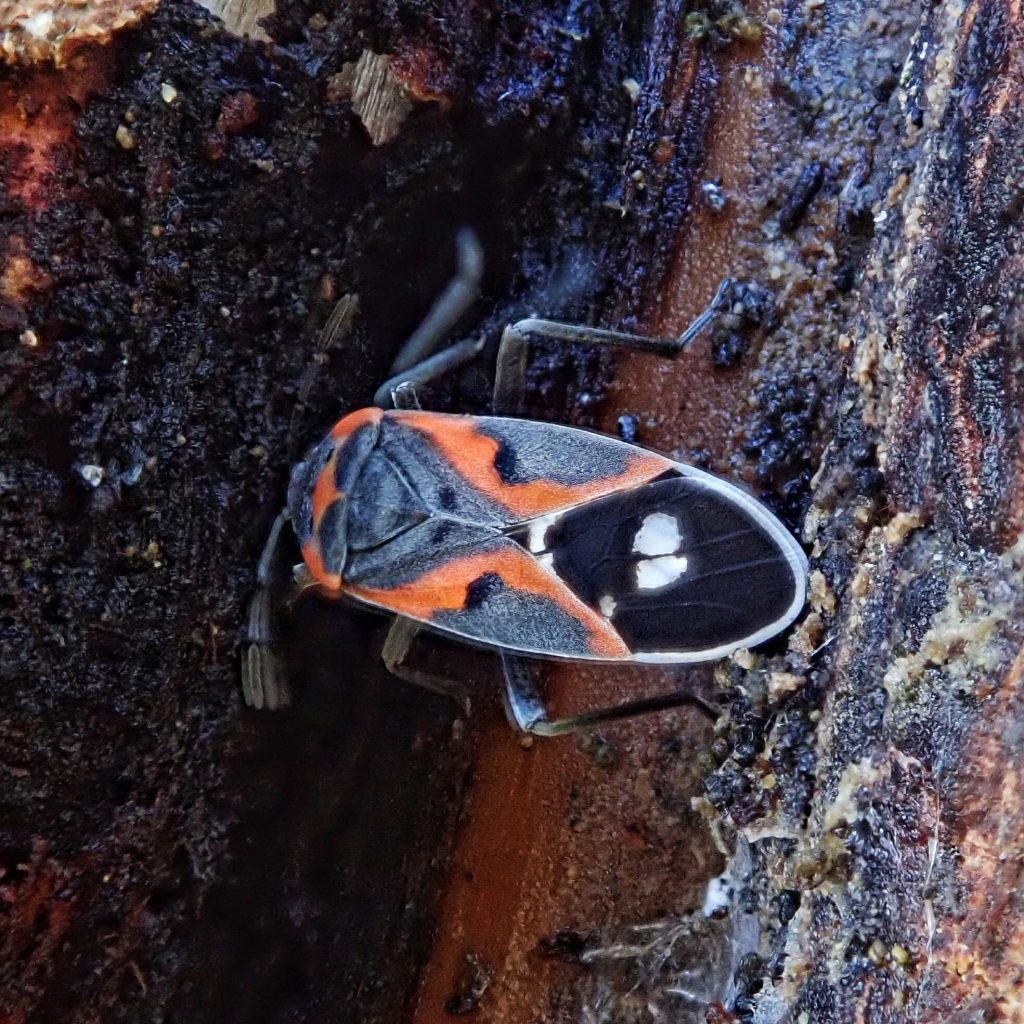
https://ucanr.edu/blogs/blogcore/postdetail.cfm?postnum=31190
https://bugguide.net/node/view/460
https://academic.oup.com/aesa/article/108/5/964/74328
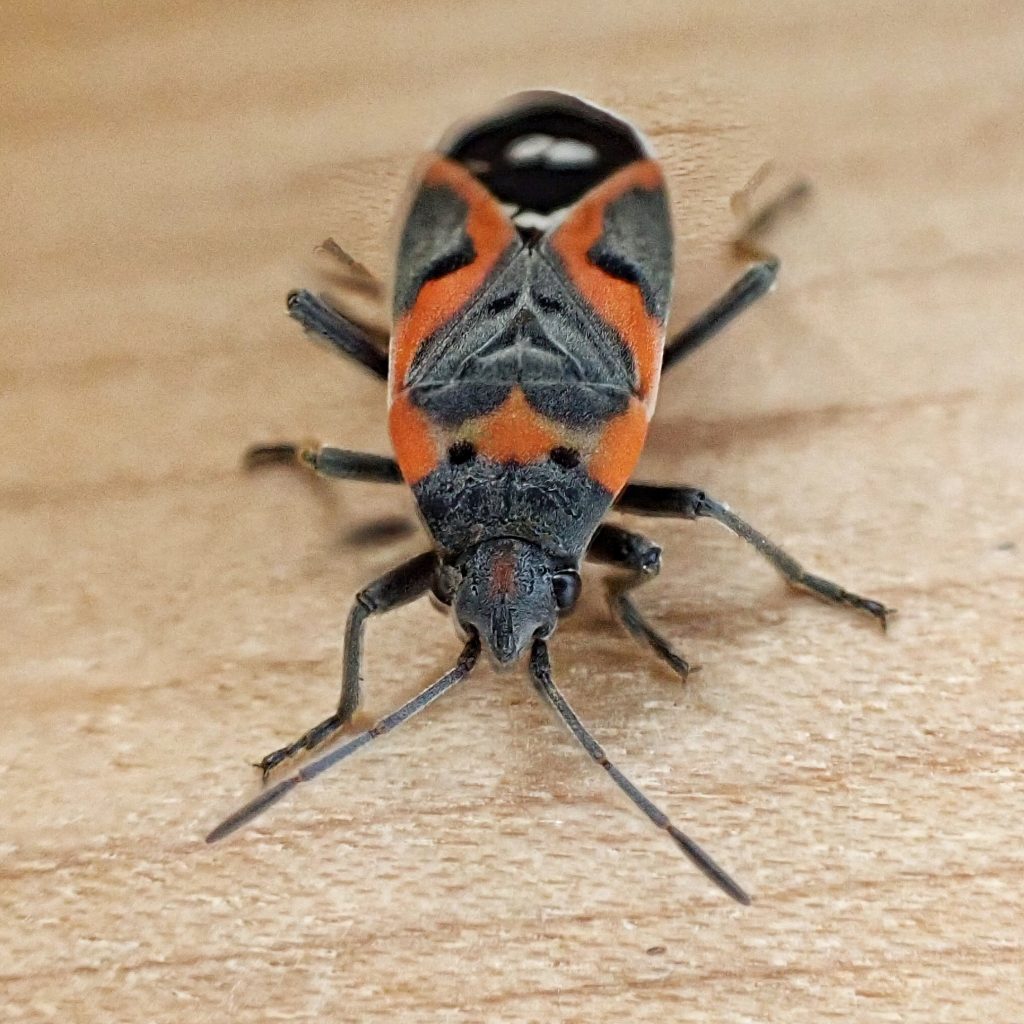
Dan — Do you or will you make a running tally for all of the flora and fauna that you have photographed and blogged about? If so, were can we access it?
Hi Vincent! On a phone, if you click on species profiles in the menu, you can go to the bottom of the page and in the categories box it says ‘species profiles (359)’, which is how many I’ve done so far. On a computer, on the species profiles page that box is near the top on the right side of the screen. Let me know if you find it, because I’m not 100% positive it’s on the public page. 359 down, 9641 to go😀
Hi Dan
I found the following confusing until I read further in your text.
“This can be problematic for true milkweed obligates such as Monarch butterflies (Danaus plexippus) and Chrysochus cobaltinus (Blue Milkweed Beetle).”
You might consider adding the words “see below.” Just a thought.
Hi Trevor,
It wasn’t a ‘see below’ kind of thing. I was just saying that the fact that they not only eat parts of the milkweed, they also eat things that live on the milkweed, things which don’t have the option of going to another species of plant.
I changed it a bit. Hopefully my point is more clear now.
Is this bug toxic to cats at all? If one happens to eat it or go playing with it etc?
Probably mildly toxic, but they’d have to eat a number of them to do any damage, and I’d imagine the taste of the first one would put them off for good. But that’s just my guess and I don’t know anything for sure.